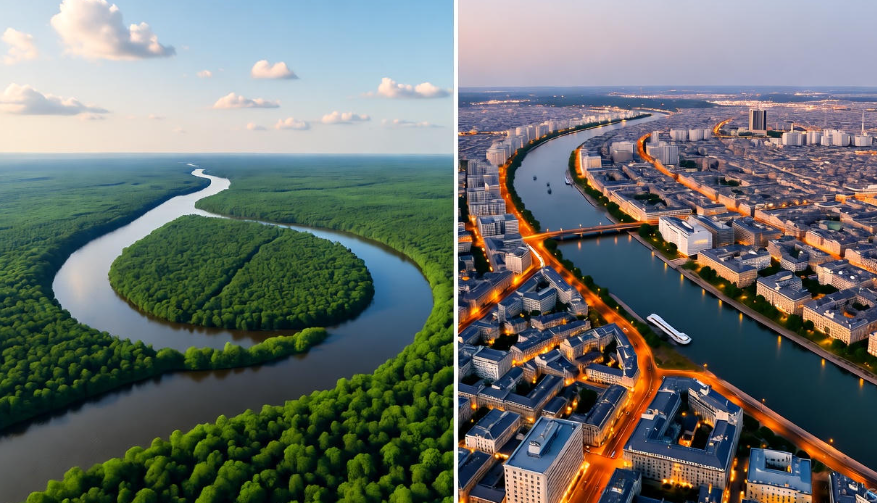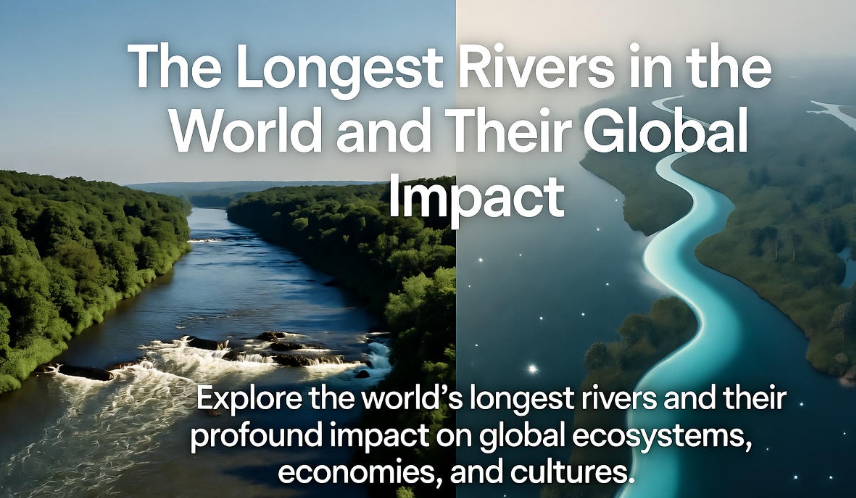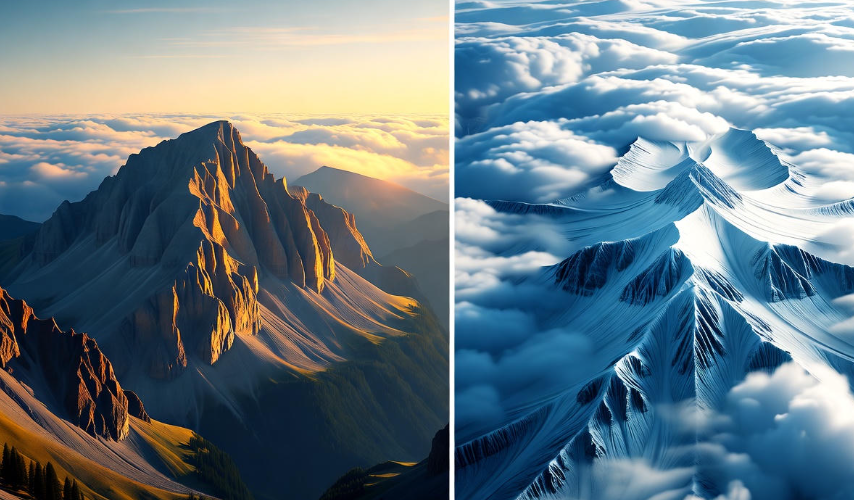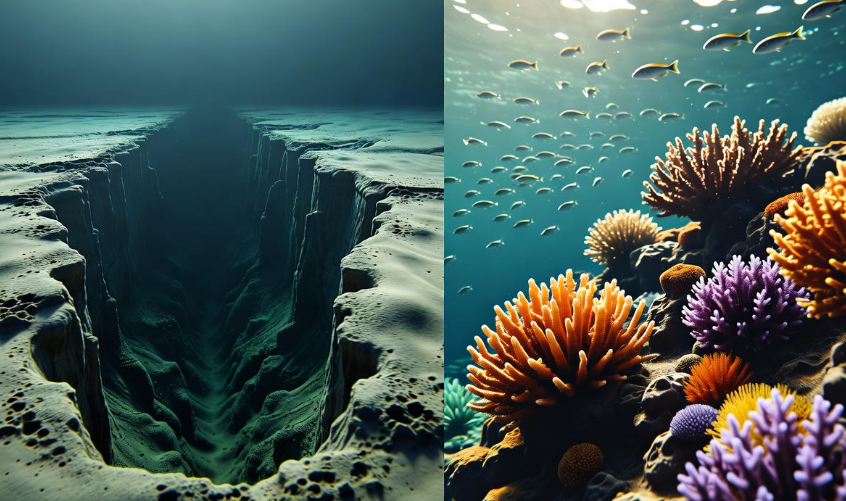When we think about rivers, we often picture calm water flowing gently through fields or cities. But behind that peaceful image lies a powerful force that has shaped human civilization, ecosystems, and even global economies. Some rivers are short and quiet. Others are massive, stretching across continents — carrying life, history, and trade on their waters.
Let’s explore the longest rivers in the world and how they’ve influenced our planet in more ways than we often realize.
The power of long rivers
Rivers aren’t just long stretches of water — they’re like arteries of the Earth. They connect mountains to seas, carry nutrients to soil, and provide water to millions. Without them, farming, travel, and even modern cities wouldn’t exist. Think about it — many of the world’s great cities were born next to rivers. Why? Because rivers gave them life.
Top 10 Longest Rivers in the World (Approximate Lengths)
| Rank | River Name | Length (km) | Continent | Countries It Flows Through |
|---|---|---|---|---|
| 1 | Nile River | 6,650 | Africa | Egypt, Sudan, Uganda, Ethiopia, South Sudan, Tanzania |
| 2 | Amazon River | 6,400 | South America | Brazil, Peru, Colombia, Ecuador, Bolivia, Venezuela |
| 3 | Yangtze River | 6,300 | Asia | China |
| 4 | Mississippi–Missouri River System | 6,275 | North America | USA |
| 5 | Yenisei–Angara–Selenga | 5,539 | Asia | Russia, Mongolia |
| 6 | Yellow River (Huang He) | 5,464 | Asia | China |
| 7 | Ob–Irtysh | 5,410 | Asia | Russia, Kazakhstan, China |
| 8 | Paraná–Rio de la Plata | 4,880 | South America | Brazil, Paraguay, Argentina |
| 9 | Congo River | 4,700 | Africa | D.R. Congo, Republic of Congo |
| 10 | Amur–Argun | 4,444 | Asia | Russia, China, Mongolia |
The Nile River – The Lifeline of Egypt
The Nile is often called “the gift of Egypt”, and for a good reason. Flowing for over 6,600 kilometers, the Nile has been the backbone of civilization for more than 5,000 years. Ancient Egyptians depended on it for farming — when it flooded, it left behind rich soil perfect for growing crops.
Even today, more than 100 million people rely on the Nile for drinking water, irrigation, and transport. It runs through deserts and brings life where there would otherwise be none.
But, the Nile also faces challenges. Overuse, pollution, and new dam projects have raised debates between countries like Egypt, Ethiopia, and Sudan. The future of this mighty river depends on international cooperation — something easier said than done.
The Amazon River – The Lungs of the Planet
Now, let’s travel across the ocean to South America — home to the Amazon River. Some argue that the Amazon is even longer than the Nile (depending on which branch you measure). Either way, it holds a title no one can dispute: it carries more water than any other river on Earth.
The Amazon flows through dense rainforests, hosting millions of species — many still undiscovered. Its basin is so vast that it produces about 20% of the world’s freshwater flow.
It’s more than a river; it’s an entire world. Indigenous communities depend on it for food, transport, and culture. Sadly, deforestation and mining threaten its balance. When trees disappear, the river’s health declines — and that affects global oxygen and carbon levels.
So yes, when people call it “the lungs of the Earth,” they’re not exaggerating.
The Yangtze River – China’s Great Artery
Flowing through China from the Tibetan Plateau to the East China Sea, the Yangtze River supports hundreds of millions of people. It’s not just China’s longest river — it’s Asia’s longest.
The Yangtze has built cities like Shanghai and Wuhan and powers massive industries. Its floodplains are incredibly fertile, allowing China to feed its massive population. But there’s another side — the Three Gorges Dam, one of the world’s largest hydroelectric projects, stands on it. The dam produces huge amounts of electricity but has also caused environmental and social issues.
Still, the Yangtze remains a symbol of China’s balance between progress and preservation.
The Mississippi–Missouri River System – America’s Water Highway
If you’ve ever driven across the U.S. or seen it on a map, you’ll notice how central the Mississippi River is. It’s the 4th longest river system in the world when combined with the Missouri. Stretching from northern Minnesota down to the Gulf of Mexico, it runs right through the heart of America.
In the 1800s, the Mississippi was the main route for transporting goods like cotton and grain. Today, it’s still vital for commerce and farming. The river also supports rich ecosystems and wetlands that shelter wildlife.
However, it’s not without problems. Pollution from factories, floods, and hurricanes frequently challenge this mighty river. Still, its role in American culture — from Mark Twain’s stories to the blues — keeps it close to people’s hearts.
The Yenisei and Ob Rivers – Siberia’s Frozen Giants ❄️
Russia holds two of the world’s longest rivers — the Yenisei and Ob. Both flow through Siberia, where winters can be brutally cold. These rivers might not be as famous as the Nile or Amazon, but they’re just as important in their regions.
They carry fresh water across thousands of kilometers of tundra and forests. The Yenisei, in particular, drains into the Arctic Ocean, helping regulate the planet’s temperature balance.
Interestingly, these rivers are also key for hydropower and transport of resources like oil and timber — crucial for Russia’s economy. Yet, as climate change warms Siberia, their ice cycles are shifting, creating unpredictable floods and ecological risks.
The Yellow River – The Cradle and Curse of China
The Yellow River (or Huang He) is known as the “Mother River of China.” Ancient Chinese civilizations grew along its banks thousands of years ago. It’s the world’s sixth longest river, but perhaps one of the most historically influential.
Its fertile plains gave birth to Chinese agriculture and culture — but the river also brought devastating floods. In fact, some of the deadliest floods in human history happened here.
Today, it remains a lifeline for northern China, providing water for farming and industry. But the Yellow River also struggles with pollution and sedimentation, making water scarcity a major issue for millions.
The Congo River – Africa’s Deep Mystery
The Congo River is Africa’s second longest but the deepest river in the world, plunging over 200 meters below the surface in some places. Flowing through rainforests almost as rich as the Amazon, it’s a treasure trove of biodiversity.
It powers communities, supports fishing, and holds enormous potential for hydroelectric power. The Inga Dam projects aim to turn that potential into clean energy for Africa — but these projects must balance human needs with the preservation of nature.
The Congo is wild, powerful, and still not fully explored — one of Earth’s last great natural frontiers.
The Paraná River – South America’s Economic Lifeline
Flowing through Brazil, Paraguay, and Argentina, the Paraná River is crucial for transport, irrigation, and electricity. Its Itaipu Dam (shared by Brazil and Paraguay) is one of the largest power-producing dams in the world.
The river also supports fertile farmlands that produce soybeans, corn, and meat — major exports for the region. However, industrial pollution and dam constructions have disrupted ecosystems and fish populations.
Still, the Paraná continues to sustain millions of people and remains a pillar of South America’s economy.
The Amur River – Where Russia Meets China
Running along the border between Russia and China, the Amur River (also known as Heilong Jiang in Chinese) stretches over 4,400 kilometers. It’s one of the few rivers that flows mostly undammed, allowing natural ecosystems to thrive.
The Amur is home to unique species like the endangered Amur leopard and Siberian tiger. It’s also an important trade and transport route, linking two massive nations. However, industrial waste and deforestation along its banks are emerging threats.
The Amur’s untouched beauty is rare today — it’s a reminder that some parts of our planet still resist overdevelopment.

Why Long Rivers Matter to the World
Rivers don’t just carry water; they carry life. They influence climate, culture, and even global politics. Here’s how these mighty rivers impact us all:
| Impact Type | Description | Example |
|---|---|---|
| Economic | Rivers enable trade, farming, and hydroelectric power. | Mississippi for U.S. trade, Itaipu Dam on Paraná |
| Environmental | They shape ecosystems and support biodiversity. | Amazon and Congo rainforests |
| Cultural | Rivers inspire traditions, myths, and art. | Nile in Egyptian civilization |
| Political | Shared rivers often cause international disputes. | Nile (Egypt–Ethiopia), Mekong (China–Vietnam) |
| Climatic | Rivers regulate weather by transporting heat and moisture. | Amazon basin influences South American rainfall |
Without these rivers, the Earth would be drastically different — drier, less fertile, and far less connected.
Rivers and the Threat of Climate Change ⚠️
Climate change is rewriting the story of rivers worldwide. Melting glaciers, rising temperatures, and erratic rainfall are altering river flows. Some rivers are drying faster, while others flood more often.
For example:
-
The Himalayan glaciers, which feed the Yangtze and Ganges, are melting rapidly.
-
The Amazon basin is losing water due to deforestation and droughts.
-
The Nile Delta faces rising sea levels that could affect millions.
The challenge now is to manage these rivers sustainably — balancing human use with nature’s needs. Governments, scientists, and local communities must work together to protect these lifelines.
A Closer Look at River Economies
You might not realize it, but many global industries depend on rivers. From tourism to transport to power — rivers drive economies quietly.
| River | Key Economic Role | Estimated People Benefiting |
|---|---|---|
| Nile | Agriculture & Irrigation | 100+ million |
| Amazon | Fishing, Transport, Timber | 30+ million |
| Yangtze | Industry, Shipping, Power | 400+ million |
| Mississippi | Trade, Agriculture | 60+ million |
| Paraná | Hydroelectric Energy | 50+ million |
Every time you eat rice from China, drink coffee from Brazil, or wear cotton from Egypt — you’re connected to one of these rivers. ☕
Interesting Facts You Might Not Know
-
The Amazon once flowed backward millions of years ago before the Andes Mountains rose.
-
The Congo River could power all of Africa if fully harnessed — that’s how much energy it holds.
-
The Mississippi carries over 500 million tons of sediment to the Gulf each year.
-
The Nile’s flow is so steady that ancient farmers could predict floods using the stars.
-
The Yangtze River dolphin (baiji) is sadly extinct — a warning sign of overuse.
Each fact tells a story — of change, of progress, and sometimes, of loss.
How We Can Protect These Rivers
Protecting rivers doesn’t require being a scientist or activist — small actions matter.
-
Use less plastic — it often ends up in rivers.
-
Support reforestation efforts near river basins.
-
Choose sustainable products that don’t harm river ecosystems.
-
Educate others about river pollution and conservation.
Rivers have given us everything — it’s only fair we give something back.
FAQs About the Longest Rivers and Their Global Impact
Q1: Which is truly the longest river in the world — the Nile or the Amazon?
A: There’s still debate. Some measurements show the Nile is slightly longer (about 6,650 km), while others say the Amazon edges it out at 6,800 km. It depends on which tributary you include.
Q2: Why are rivers so important to civilizations?
A: Because they provide water, food, fertile soil, and transport — all the things early societies needed to grow. That’s why ancient cities often formed along riverbanks.
Q3: Which river carries the most water in the world?
A: The Amazon River. It releases more water into the ocean than the next seven largest rivers combined!
Q4: How do dams affect rivers?
A: Dams generate energy and help control floods, but they also disrupt fish migration, displace people, and change natural water flow.
Q5: What’s the deepest river on Earth?
A: The Congo River — it can reach depths of more than 220 meters.
Q6: Are any of these rivers drying up?
A: Sadly yes. The Yellow River and parts of the Colorado River (in North America) have seen serious water shortages due to climate change and overuse.
Final Thoughts
The world’s longest rivers are more than lines on a map — they’re threads connecting humanity and nature. From the Nile’s deserts to the Amazon’s forests, from the icy Yenisei to the mighty Mississippi, each river tells a story of survival, progress, and beauty.
But as our planet warms and our needs grow, these rivers face greater stress than ever before. Protecting them isn’t just about saving water — it’s about saving life itself.
Because, in the end, when the rivers stop flowing… so does everything else.




